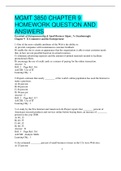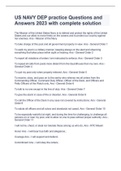Tentamen (uitwerkingen)
COMPLETE TEST BANK FOR NURSING: A CONCEPT-BASED APPROACH TO LEARNING VOLUMES I II & III 4TH EDITION PEARSON EDUCATION LATEST UPDATE
COMPLETE TEST BANK FOR NURSING: A CONCEPT-BASED APPROACH TO LEARNING VOLUMES I II & III 4TH EDITION PEARSON EDUCATION LATEST UPDATE
[Meer zien]












